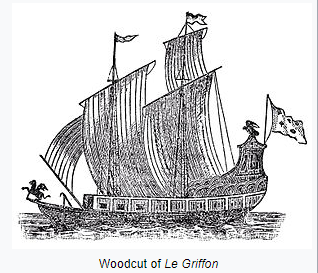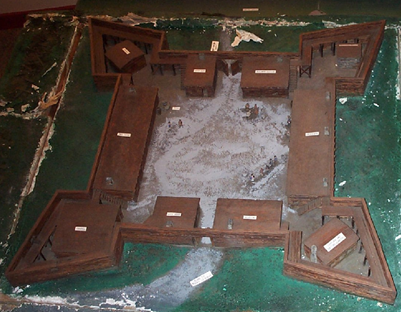Who were the first people to live in Erie County? Why the indigenous people of course! Not much is known about the Eriez or Cat Nation (probably referring to racoons), but scholarship assumes that the group was assimilated by the Iroquois nation long before European settlement. The traditional area of Eriez settlement found through archeological digs was mainly between Erie and Dunkirk, New York.
It was not until 1673 that a formal mapping of this area occurred by Father Jacques Marquette and Louis Joliet. They then went to the West to map the other Great Lakes and the Mississippi River claiming it all for France.

The French, who were serious about maintaining their presence in the area, were in a race with the British Empire. The economic development of both empires rested on this part of the world and the natural resources found therein. Time moved slowly (everything did back then) for it was not until 1753 that the Fort at Presque Isle was built on the west bank of what is now known as Mill Creek. Currently, the fort area adjoins the grounds of the Soldier’s and Sailor’s Home.
Approximately 250 men were stationed at the Fort and a French village was established nearby with about 100 families, a priest, school, and grist mill. The lands around the Fort were cleared and farms created. Fort Presque Isle was one of a series of forts built along the transportation route from the Great Lakes, a portage to Le Boeuf at French Creek and Fort Machault, along the Allegheny River. Control of the Ohio River was important to extend influence down to the Mississippi River, so Fort Dusquesne (Pittsburgh later) was built. Good growing lands were found along the route so additional forts were being planned.

In 1753, a young man by the name of George Washington was sent to notify the French that the lands they now occupied belonged to Great Britain. Washington’s now famous visit to Fort Le Boeuf in present day Waterford, PA turned out to be unsuccessful for the 21-year-old Major in the Virginia Militia. The French were not going to leave and the native people living here at the time supported the friendly French with their gifts and hospitality versus the British who were not nearly as kind.

Eventually the British “won over” most of the local native tribes. Prior to the start of the French and Indian War (1754 – 1763) the French only had about 100 men at the Fort and were driven off the site by native tribes. By 1759, the Fort was abandoned, and all French influence ended in this area.
